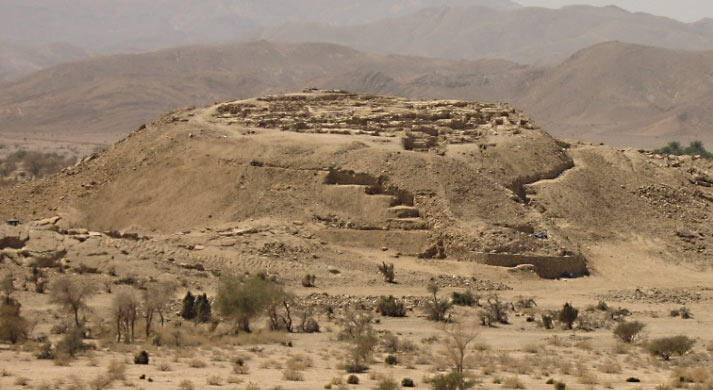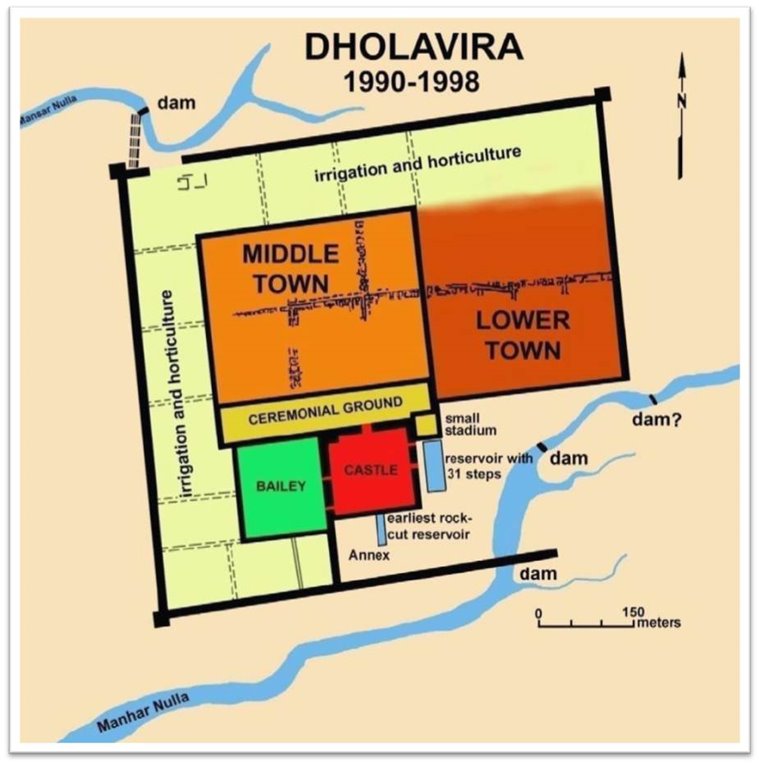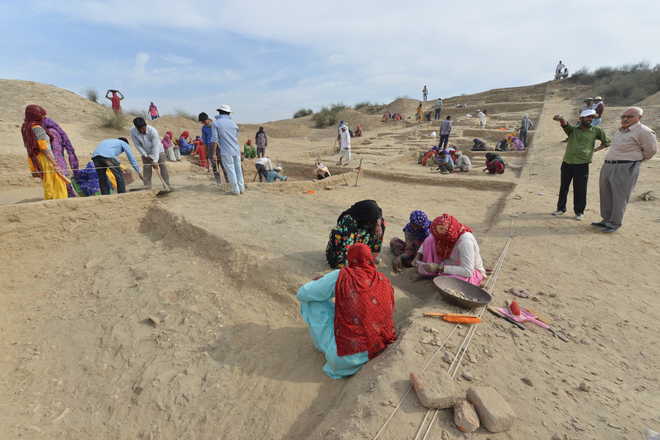J. Bates a, , , C.A. Petrie a, , R.N. Singh b,
a Department of Archaeology and Anthropology, University of Cambridge, UK
b Department of AIHC and Archaeology, Banaras Hindu University, India
Received 17 February 2015, Revised 11 March 2016, Accepted 15 April 2016, Available online 21 November 2016
http://dx.doi.org/10.1016/j.jas.2016.04.018
Open Access funded by Arts and Humanities Research Council
The nature and timing of rice domestication and the development of rice cultivation in South Asia is much debated. In northern South Asia there is presently a significant gap (c.4200 years) between earliest evidence for the exploitation of wild rice (Lahuradewa c.6000 BCE) and earliest dated evidence for the utilisation of fully domesticated rice (Mahagara c.1800 BCE). The Indus Civilisation (c.3000–1500 BCE) developed and declined during the intervening period, and there has been debate about whether rice was adopted and exploited by Indus populations during this ‘gap’. This paper presents new analysis of spikelet bases and weeds collected from three Indus Civilisation settlements in north-west India, which provide insight into the way that rice was exploited. This analysis suggests that starting in the period before the Indus urban phase (Early Harappan) and continuing through the urban (Mature Harappan/Harappan), post-urban (Late Harappan) and on into the post-Indus Painted Grey Ware (PGW) period, there was a progressive increase in the proportion of domesticated-type spikelet bases and a decrease in wild-types. This pattern fits with a model of the slow development of rice exploitation from wild foraging to agriculture involving full cultivation. Importantly, the accompanying weeds show no increased proportions of wetland species during this period. Instead a mix of wetland and dryland species was identified, and although these data are preliminary, they suggest that the development of an independent rice tradition may have been intertwined with the practices of the eastern most Indus peoples. These data also suggest that when fully domesticated Oryza sativa ssp. japonica was introduced around 2000 BCE, it arrived in an area that was already familiar with domesticated rice cultivation and a range of cultivation techniques.
Keywords
Rice (Oryza sativa); Indus Civilisation; South Asia; Macrobotanical analysis; Cultivation systems
Yog.
See also :
Farming rice in India much older than thought, used as a ‘summer crop’ by the Indus Civilisation
Bloggers note : Well its out finally ;) . More fascinating researches are also coming on related subjects soon!.
a Department of Archaeology and Anthropology, University of Cambridge, UK
b Department of AIHC and Archaeology, Banaras Hindu University, India
Received 17 February 2015, Revised 11 March 2016, Accepted 15 April 2016, Available online 21 November 2016
http://dx.doi.org/10.1016/j.jas.2016.04.018
Open Access funded by Arts and Humanities Research Council
HighlightsAbstract
•
We present new data for rice cultivation in the Indus Civilisation.
•
These data suggest rice domestication was linked with the east of this civilisation.
•
Rice domestication and cultivation need to be disentangled as issues.
•
Results suggest complex rice cultivation systems before c.1500 BCE.
The nature and timing of rice domestication and the development of rice cultivation in South Asia is much debated. In northern South Asia there is presently a significant gap (c.4200 years) between earliest evidence for the exploitation of wild rice (Lahuradewa c.6000 BCE) and earliest dated evidence for the utilisation of fully domesticated rice (Mahagara c.1800 BCE). The Indus Civilisation (c.3000–1500 BCE) developed and declined during the intervening period, and there has been debate about whether rice was adopted and exploited by Indus populations during this ‘gap’. This paper presents new analysis of spikelet bases and weeds collected from three Indus Civilisation settlements in north-west India, which provide insight into the way that rice was exploited. This analysis suggests that starting in the period before the Indus urban phase (Early Harappan) and continuing through the urban (Mature Harappan/Harappan), post-urban (Late Harappan) and on into the post-Indus Painted Grey Ware (PGW) period, there was a progressive increase in the proportion of domesticated-type spikelet bases and a decrease in wild-types. This pattern fits with a model of the slow development of rice exploitation from wild foraging to agriculture involving full cultivation. Importantly, the accompanying weeds show no increased proportions of wetland species during this period. Instead a mix of wetland and dryland species was identified, and although these data are preliminary, they suggest that the development of an independent rice tradition may have been intertwined with the practices of the eastern most Indus peoples. These data also suggest that when fully domesticated Oryza sativa ssp. japonica was introduced around 2000 BCE, it arrived in an area that was already familiar with domesticated rice cultivation and a range of cultivation techniques.
Keywords
Rice (Oryza sativa); Indus Civilisation; South Asia; Macrobotanical analysis; Cultivation systems
Yog.
See also :
Farming rice in India much older than thought, used as a ‘summer crop’ by the Indus Civilisation
Bloggers note : Well its out finally ;) . More fascinating researches are also coming on related subjects soon!.











